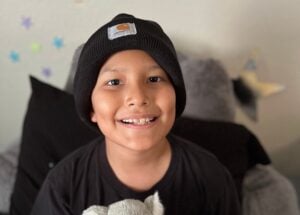
Sights Set on a Strong End to 2023 — Will You Join Us?
Family Reach CEO Carla Tardif reflects on 2023 and calls for community support before the year ends.
Of all the things I wish I had done during those 700 long hours of chemotherapy, there’s one that rises to the top each time. My biggest regret is not reaching out to other non-Hodgkin lymphoma patients while I was drowning in what felt like an avalanche of questions that would crush me every day.
Navigating life with cancer is difficult enough in terms of the physical toll it all takes, but it’s really the emotional and mental part of the experience that hits the hardest. While my family and friends were amazing, they never understood exactly what I was going through.
Feelings of isolation gripped me during what felt like every waking moment, despite my hardest efforts to shake them off. I was sitting on my couch in a haze almost every day, fighting the urge to feel any self-pity, but the more I tried dealing with this on my own, the harder it became. I was considering topics that none of my friends, family, and peers were dealing with:
I realized mid-treatment that I wanted that connection to people who’d been through what I was going through right then, and I wanted to democratize access to such a resource. That was the genesis of The Patient Story, a platform I created with the mission of giving “human answers to cancer questions.” No medical jargon, just hearing about patient and caregiver experiences in plain, everyday language.
The power of patient stories can’t be overstated, and they’re a beautiful reminder of the connection and community that is so important when you’re going through cancer. Here’s a taste of those powerful voices, with a focus on how they dealt with various parts of navigating life with cancer, including finances, anxiety, hair loss, and fertility preservation.
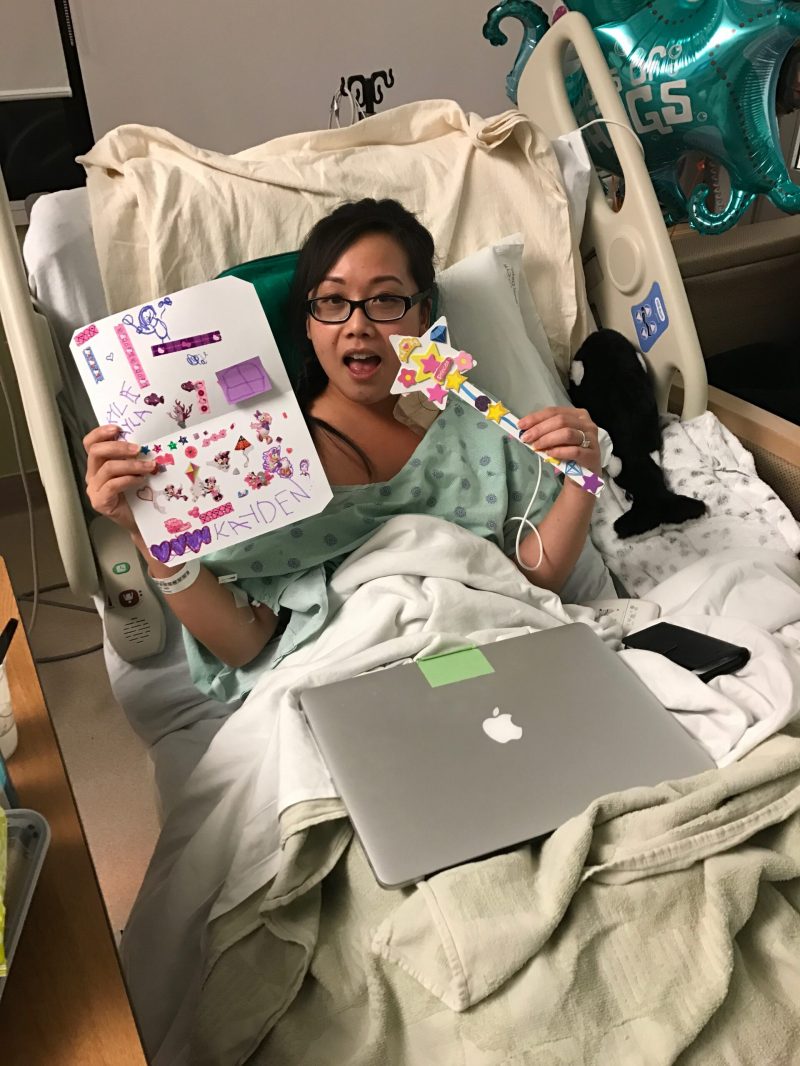
Getting diagnosed with cancer is overwhelming enough, but for many, there’s an entire list of questions centered on how to pay for treatment, whether insurance will cover procedures, and with money going elsewhere, how to pay for living costs like rent and food.
Genoa, who was diagnosed with breast cancer, said these financial worries led to so many more pressures for her and her family.
“I think the economic reality for a lot of people is earning 70% of your income by going on sick leave if you’re lucky enough even to have sick leave, is such a hit to your budget. It doesn’t help you get better knowing that your finances are compromised. All I knew was I didn’t need that added pressure for my family.”
For Erica, dealing with Human Resources at work was a self-described “headache.” She says there were hard conversations with her healthcare provider, as well.
“I was told by my doctor, ‘You’re not going to work, I don’t think it’s recommended.’ They ask if you’re able to afford the cost of not working because they want you to be okay. I said I’m married, they said good. My work even acknowledged it. They said, “Okay, good, because we can only cover your health insurance for so long,’ which is sad and frustrating in itself.”
Here’s where researching services like Family Reach can make a big difference! The point here is that you don’t have to go at it alone. It may feel like there’s too much to deal with, so don’t be afraid to ask for help.
Scanxiety is a term that describes the worry that comes up while waiting for scan results or results from other tests. Different patients and caregivers deal with the difficult waiting period in various ways. For some, the best route is filling up the calendar as a distraction.
Shari is one such person. A metastatic breast cancer thriver, Shari talks about how she’s learned to plan vacations around the time of her scans.
“Sometimes, we’ll go right before a scan. I might be on a two-week cruise and two days later, I’ll have a scan. Other times, we’ll schedule a trip for right after a scan,” Shari said. “We do that because we figure if I get a really bad scan result, and I have to change my treatment, it’d be really nice to have a break from life beforehand.”
I, personally, remember feeling so nervous especially for my mid-treatment PET-CT scan because it would be the first real indicator of how effective the intensive chemotherapy was on my cancer. I didn’t want to hear what my husband had to say, but his words became ones I lived by to cope with my scanxiety.
He said that the way my body would respond to the treatment was simply the way it would respond. It didn’t matter when I found out and my worry would only exacerbate things. It’s a lot harder to put that into practice, but the more I accepted that message, the more I could focus on living in the present and being happy.
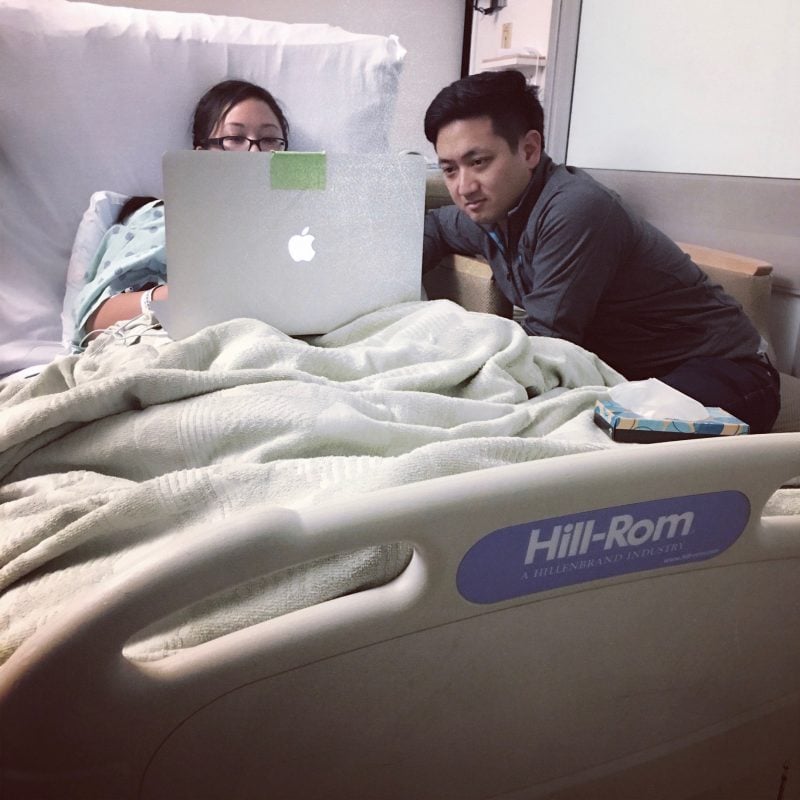
There is no one right way to deal with the loss of hair due to cancer treatment. Many of The Patient Story community members describe wanting to cut and shave their heads in order to avoid seeing clumps of hair fall out, which they felt would be traumatizing.
Some tried Cold Caps, which offers the potential of saving some hair. Margaret, a breast cancer thriver, used Cold Caps and says they helped her save about 60% of her hair, but she also adds it was the hardest part of treatment.
“By the end, by the last cap, I was just wiped out and it’s like a brain freeze that entire time and a headache. So that was probably the most painful part.”
For others, the shock of losing hair outside of the head was difficult to digest. Keyla, a non-Hodgkin’s lymphoma thriver, described the impact of losing her eyelashes and eyebrows.
“The hair loss on my face was more difficult because I have always had very thick eyelashes and eyebrows so I didn’t enjoy that by any means, but they start to grow back between each cycle so I know they’ll come back quickly. It’s definitely nice not having to shave my legs though!”
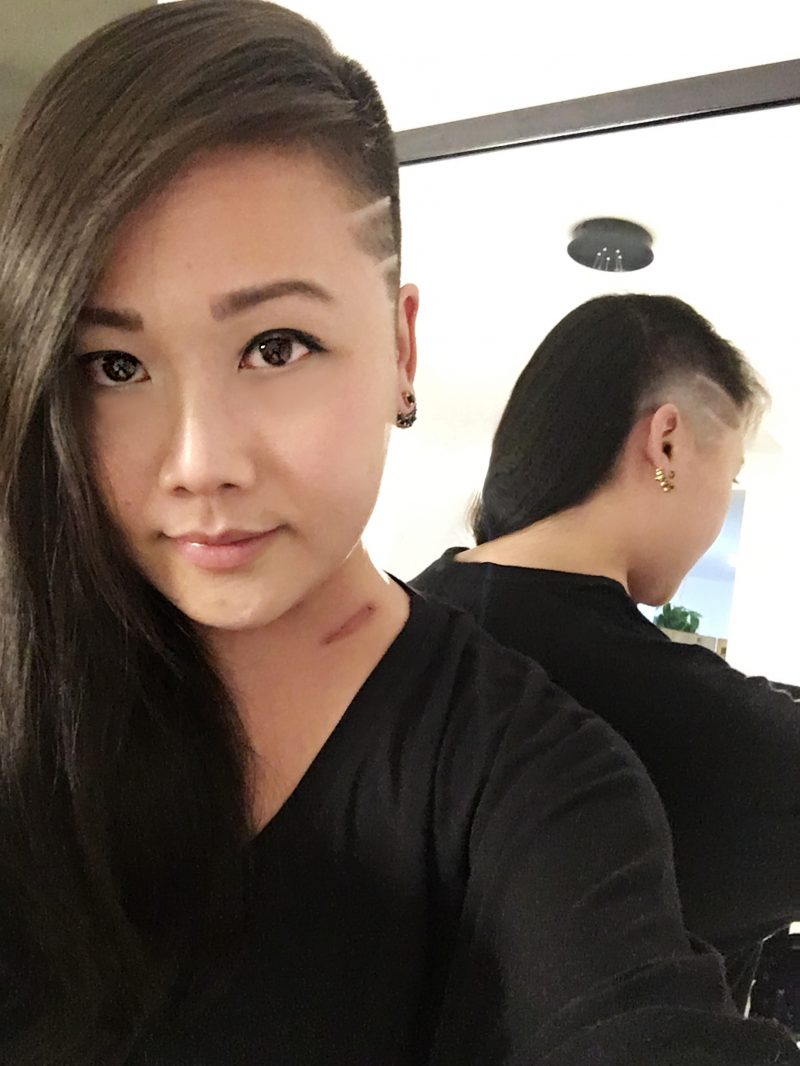
For some people facing cancer treatment, planning for a future pregnancy is possible beforehand. Oftentimes for women, this entails egg harvesting and retrieval. For men, it means banking healthy sperm before treatment.
Rick, a testicular cancer survivor who underwent removal surgery, added “even though you probably should just in case something goes wrong, it’s very unlikely for something to go wrong during the surgery. But before you do chemo, they 100-percent would recommend that you sperm bank if you plan to have children. It’s important in the future.”
Whatever the financial, mental, or emotional hurdle, know that there’s a big community of people out there who have gone through what you’re going through. Don’t be afraid to find these people, whether it’s from The Patient Story, Family Reach, or somewhere else. Always remember that you’re not alone!
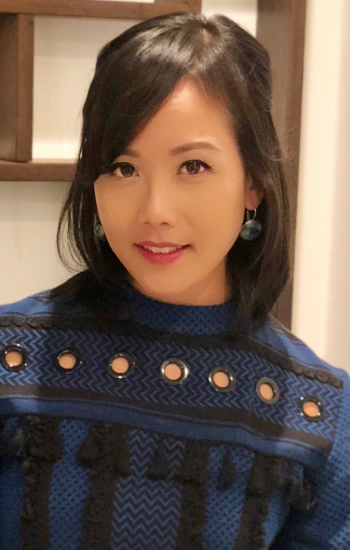
Stephanie Chuang is the founder of The Patient Story, a platform born out of her own survival of cancer in 2017. The website gives “human answers to your cancer questions,” featuring in-depth stories of cancer survivors to help newly-diagnosed patients and caregivers better understand and navigate life during and after treatment.
Previously, Stephanie spent a decade in TV news as an Emmy-nominated journalist. She was last working at NBC Bay Area as a Special Projects and San Francisco-based reporter.

Family Reach CEO Carla Tardif reflects on 2023 and calls for community support before the year ends.
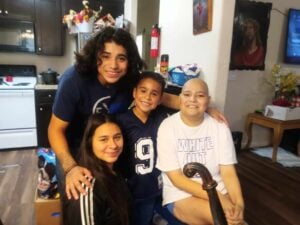
Your holiday giving provides financial relief to families like these who are facing cancer this winter.

Curious what a donation to Family Reach does? Here’s a breakdown of how donations to Family Reach provide financial support to families facing cancer.
Applications will only be reviewed and processed for open funds.
Applications will only be reviewed and processed for open funds.
Applications will only be reviewed and processed for open funds.
Applications will only be reviewed and processed for open funds.
Applications will only be reviewed and processed for open funds.